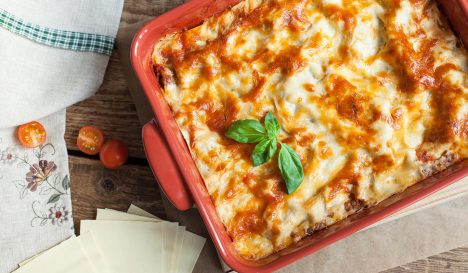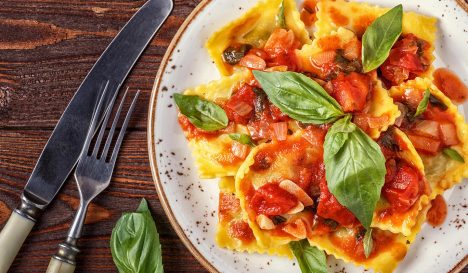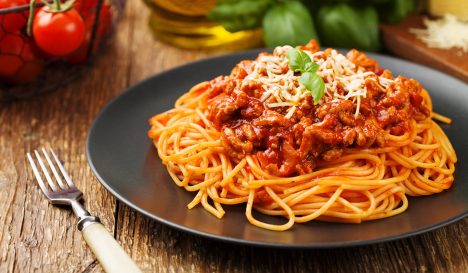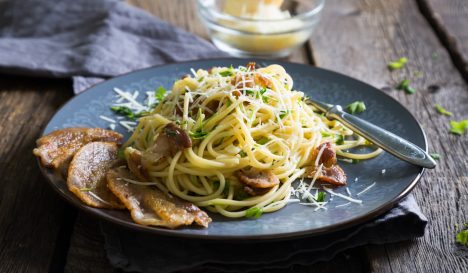Pasta
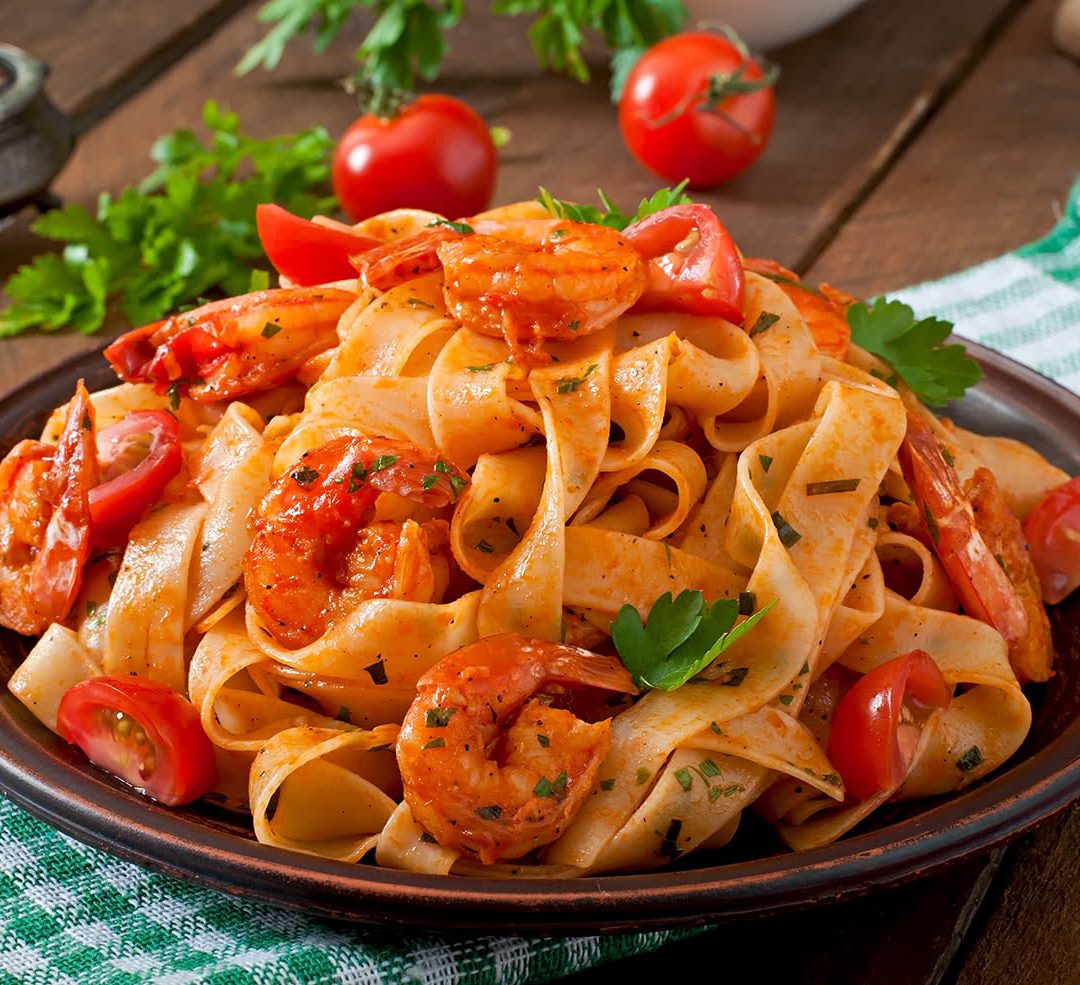
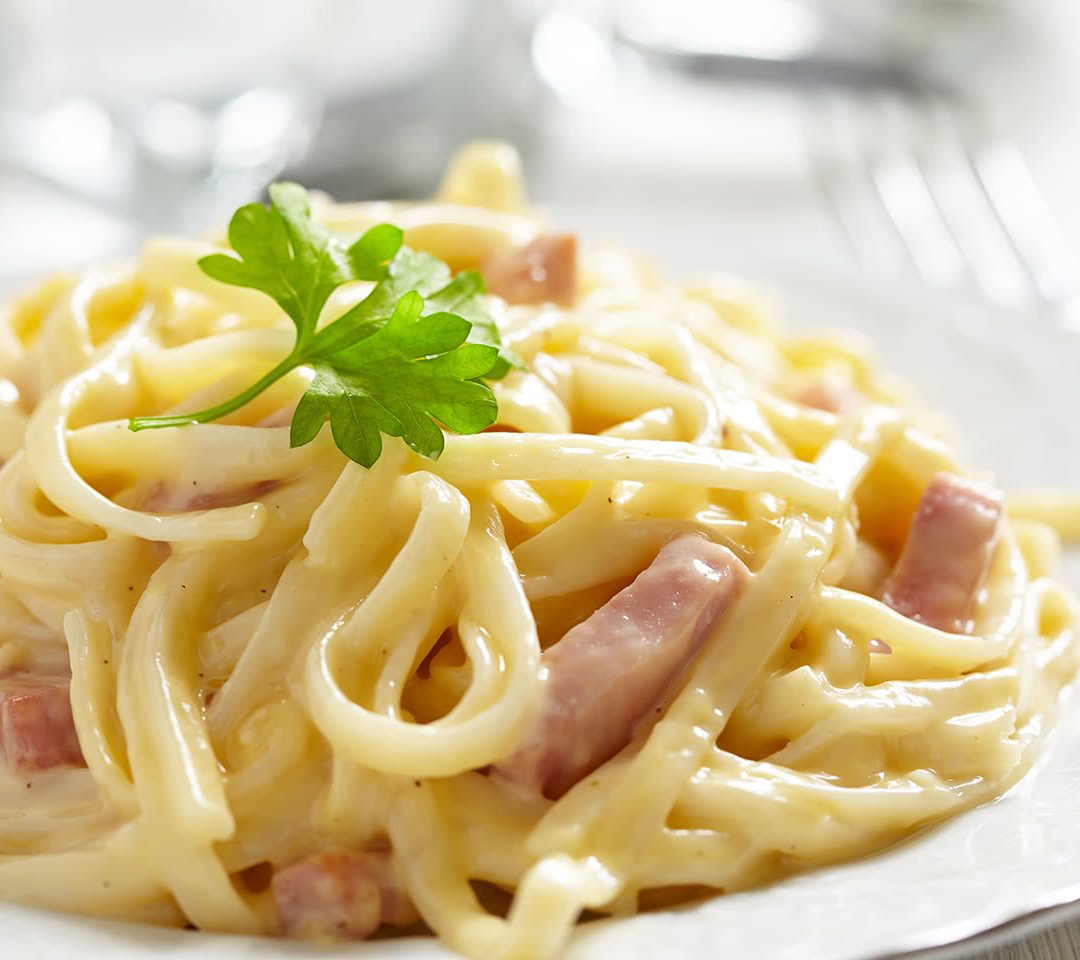
Pasta
-
Kitchen Italian cuisine
-
Basis Noodles / pasta
-
Dish type Main course
-
For who Carb lovers
What is pasta?
Italian pasta (pronounced “PAS-tah”) is a collective name for a category of food made from wheat flour and water, sometimes with egg. The name refers to the resulting dough (pasta also means “dough”) that is rolled out and cut into various shapes.
Pasta is cooked in water and served with a sauce. All in all, pasta is one of the most famous, most eaten and certainly the most loved dishes in the world.
There are more than three hundred different types of pasta. The most popular forms are:
- Spaghetti: thin round long strings
- Lasagne: wide, flat sheets
- Macaroni: short, narrow, curved tubes
- Papardelle: flat, fairly wide ribbons
- Penne: short tubes
- Ravioli: dough cushions with a filling
- Tagliatelle: flat, fairly narrow ribbons
Examples of known pasta-with-sauce combinations are:
- Lasagne bolognese: pasta sheets with a tomato-meat sauce baked in the oven
- Spaghetti alla carbonara: spaghetti with bacon and a cream sauce
- Spaghetti alle vongole: spaghetti with shellfish
The matching of pasta with sauce is a true art that Italians are introduced from an early age. Most of us are completely satisfied with a plate of “pasta with pesto” and serve it with whatever pasta we have in the cupboard.
An Italian mother would never just use any pasta form with her authentic pesto Genovese. Types of pasta that go with pesto include linguine, penne or trenette (a variant of tagliatelle).
Another “wrong” combination that Italians abhor but the rest of the world loves? Spaghetti bolognese. Italians think that thin, delicate pasta strings should be served with a relatively light sauce or thin cream sauce rather than a robust ragu.
Just like bread and noodles, pasta is also an important food category that people have been feeding on for centuries, probably since ancient times. The first description of pasta dates from 1279. It refers to macaroni, although they did not necessarily mean small tubes. About a hundred years later, gnocchi is described in the Decameron. Also in the fourteenth century, Italian letters talk about ravioli filled with pork, cheese and parsley. It’s clear that, in the Middle Ages, people liked to eat pasta!
Pasta has also been eaten outside Italy for centuries. The Canadians have been eating macaroni with cheese since the Middle Ages and have added vermicelli to their soup since the seventeenth century. The American president, Thomas Jefferson, was also a fan – in the eighteenth century, he was very fond of ‘macaroni’ and even had a pasta machine shipped from Italy to America.
Did you know...
Before the Second World War, pasta was not called pasta at all. Until recently, the word “pasta” was used in Italy for all types of dough – what is now pasta was called “paste alimentari.” In most other countries, it was known as noodles or macaroni. In Germany, pasta is still called ‘nudeln’ which derives from noodles.
How to make pasta
Ingredients
In general, dried pasta is made with flour made from durum wheat. Fresh pasta is made from wheat flour (preferably very finely ground ’00’ flour), whether or not combined with wheat semolina, and eggs. Because home-made pasta is usually eaten fresh, here follows the instructions for fresh pasta:
A mixture of type ’00’ flour, semolina (semolina or coarsely ground wheat) and salt is heaped on a work surface. Semolina is an ingredient in every fresh pasta type and the proportions also differ; the further you travel towards the heel of Italy, the more semolina is used. Semolina gives the pasta a bite.
Kneading and forming
Make a dimple in the mountain of flour. Pour the beaten eggs into it. The precise amount of eggs, and possibly egg yolks, differ per chef. The chef will stir the flour little by little with the fingers and knead the dough for ten minutes.
Before rolling out (Italians do this with a large rolling pin) or passing the dough through the pasta machine, the dough is left to first rest for an hour. The exact amount of egg that you need in the dough depends on the flour. Different brands absorb different amounts of moisture, but a true pasta maestro understands that even regional, geographical and weather conditions under which the grain has grown can make a difference.
The pasta sheets are then cut and shaped by hand into the desired pasta shape.
How to cook the pasta
Pasta is cooked in a large pan with salted water – preferably as salty as the sea. By stirring the pasta at the start of the cooking time, it will not stick – the splash of oil you hear so much about isn’t really necessary. The cooking time differs per pasta, should definitely not be cooked for too long. In fact, Italian chefs prefer to under-cook their pasta by about a minute short. After draining, the pasta may be added to the sauce in the pan until it is perfectly cooked – al dente or otherwise. The pasta dish can still be stirred with some of the reserved cooking water from the pasta.
How to eat
Italians do not serve their sauce on top of pasta but mix the two well before serving in the pan. Every piece of pasta is well covered with sauce.
Please consider
Pasta dishes are eaten on their own in Canada.
Also try
Just as pasta is the basis of Italian cuisine, so noodles are the basis of Asian cuisine. Well-known noodle dishes are Indonesian noodles, Thai pad thai and Japanese ramen.

